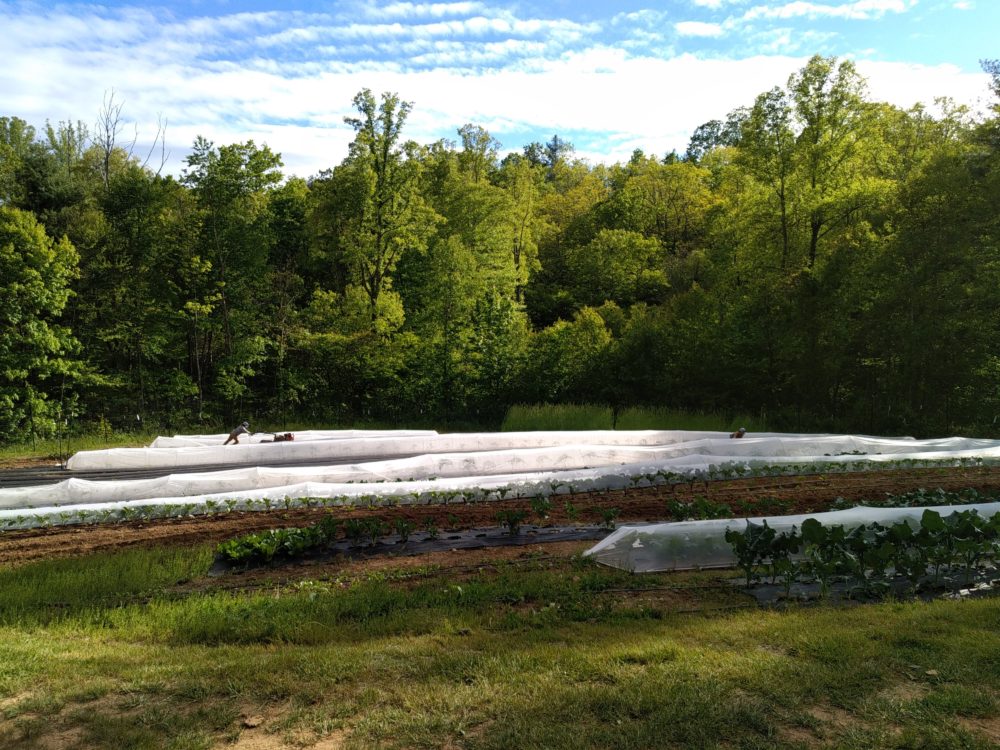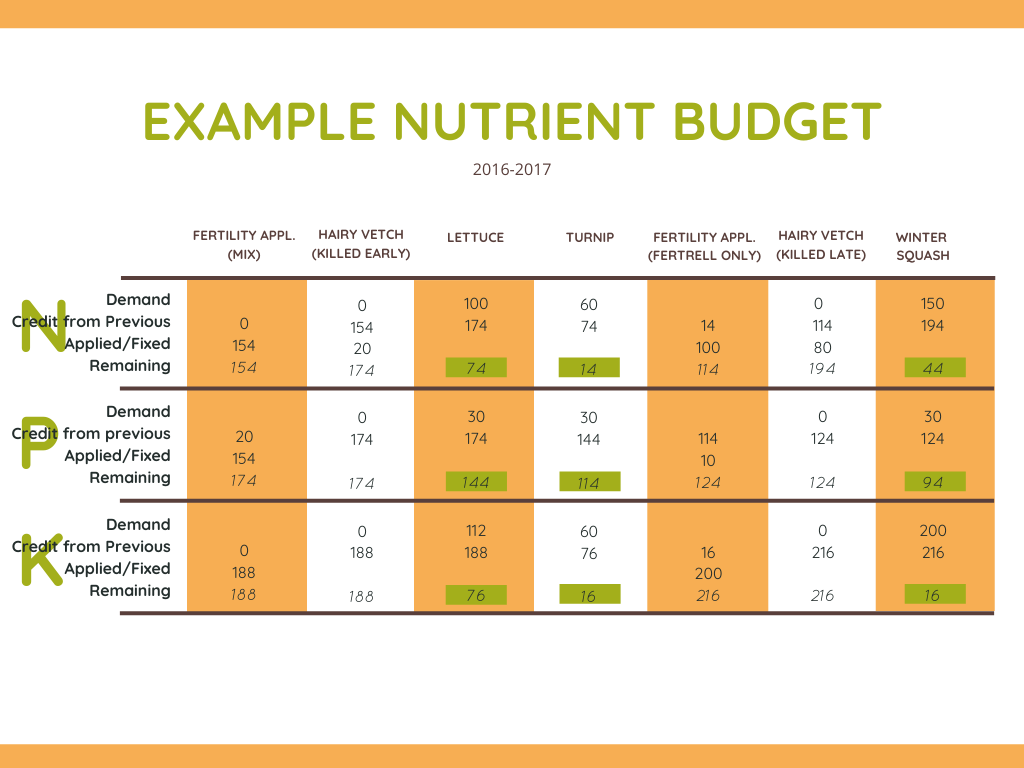by Mark Dempsey, CFSA Farm Services Manager | Thursday, Aug. 20, 2020 —

Fields at Red Scout Farm in Black Mountain, NC
Are you a grower looking transitioning to organic production and also improve on-farm conservation? If you are looking to do either, please read on, as there several important programs to know about that can help.
But, before going any further, you may be thinking “don’t organic production and conservation go hand-in-hand?”
They often line up well—particularly when a grower wants to improve conservation for beneficial insects and other organisms. Not to mention the improved water quality that’s associated with the limited use of pesticides and concentrated fertilizer(s). However, soil conservation is a big issue for organic farmers—especially in annual crops—because organic production relies heavily on tillage for reasons ranging from weed control to preparing beds. The problems that result from the overuse of tillage are soil erosion and depleting organic matter, but also degrading the life in the soil that supports healthy crop growth. If soil conservation and healthy crops are among your goals, then prioritizing good soil management should is a must for all organic growers. Thus, growers transitioning to organic production—newer growers especially—are encouraged to seek assistance during this process, be it in the form of expertise, financial assistance, or both, to enable both a successful transition and better on-farm conservation.
So, if you are attempting to transition to organic production while simultaneously improving on-farm conservation, you should consider one or more of the following programs.
1. Work with the Natural Resources Conservation Service (NRCS)
The NRCS provides cost-share money and technical assistance to help farms do a better job of protecting the quality of air and water, the soil from erosion, as well as building soil.
If you have a good handle on organic production but simply need the financial and technical assistance provided by the NRCS to improve conservation on your farm, this is your route.
For more information about NRCS programs, check out our article on the topic or contact your local NRCS agent. Apply for assistance directly through the NRCS. The deadline to submit applications to NRCS for 2021 programs has not yet been announced but has historically been in November (given the context of 2020, this may be delayed). Again, please contact your local NRCS agent for more information.
2. Utilize CFSA’s free* organic consulting service
If you don’t need help from the NRCS because you’re acing on-farm conservation but need assistance transitioning to organic production or getting certified, this service is a good match. To learn more, visit our organic consulting page.
*free to CFSA members

Organic certification consulting can take many forms, including paperwork review before submission. Here, Mark is working with Tim Butler of Butler Family Farms in Roseboro, NC.
3. Leverage the technical assistance of the NRCS and CFSA via a Conservation Planning Activities Supporting Organic Transition (aka CPA 138)
This is a whole-farm conservation plan through the NRCS that’s geared toward organic production and certification and is written by a Technical Service Provider on CFSA’s staff. The plan comes at no cost to growers. In fact, some growers are eligible for getting a little money back to incentivize the program.
It’s worth clarifying: transitioning to organic production and assistance from the NRCS are packaged together nicely in the CPA 138, but you do not need an NRCS program to get certified organic (and vice versa). This seems to be a point of confusion, perhaps because the NRCS and National Organic Program are part of the USDA, or perhaps because the CPA 138 is often informally referred to as the “Organic Transition Plan” (or the “Organic Plan”), which sound a lot like the document required for organic certification, the Organic System Plan (OSP).
The CPA138 is a great tool because it wraps three important things together into one product:
- It helps to open the door to financial assistance through the NRCS to implement conservation practices (paid for at 75% or 90% of their estimated value) when justified by observed natural resource concerns (e.g., soil erosion or water quality issues). The most common conservation practices that we recommend include cover cropping, drip irrigation, mulching, pollinator habitat, conservation crop rotation, nutrient management, and moveable fencing (to name a few of the 75 on the list).
- It provides an in-depth plan with technical guidance for the growers who want it. This generally means that all of the practices and specifications needed for a comprehensive transition to conservation farming are present and include soil maps and management specifications (see below).
- It completes the OSP, the primary document needed for organic certification so that once the plan is completed and approved, it can be sent to your organic certifier as a direct substitute for their OSP.
In the following simple-yet-effective example, a nine-acre farm was relying on tillage for weed control and bed forming but suffered from severe erosion issues.
To address these issues, an organic, no-till system was implemented and the field layout was modified to put all crop rows on contour. This dramatically reduced soil erosion and helped to rebuild organic matter lost from intensive tillage. The plan also incorporated legume cover crops to shift nutrient management away from applying excessive phosphorus fertilizer.

Example of a farm redesign to help implement a suite of conservation farming practices.

A soils map of the example farm, indicating differences in the suitability of growing in different areas. Data was taken from Web Soil Survey.
A snapshot of a nutrient budget designed to draw down excess phosphorus for the example farm.
To sum it up, the CPA 138 is a very comprehensive and useful tool and comes at no cost to the grower. To sign up for a CPA 138, all growers must first apply through the NRCS; once approved (typically the following spring), you can begin working with a Technical Service Provider to complete the plan.
Questions?
If you’re interested in learning more, contact Mark at mark@carolinafarmstewards.org.
All images are by CFSA.



